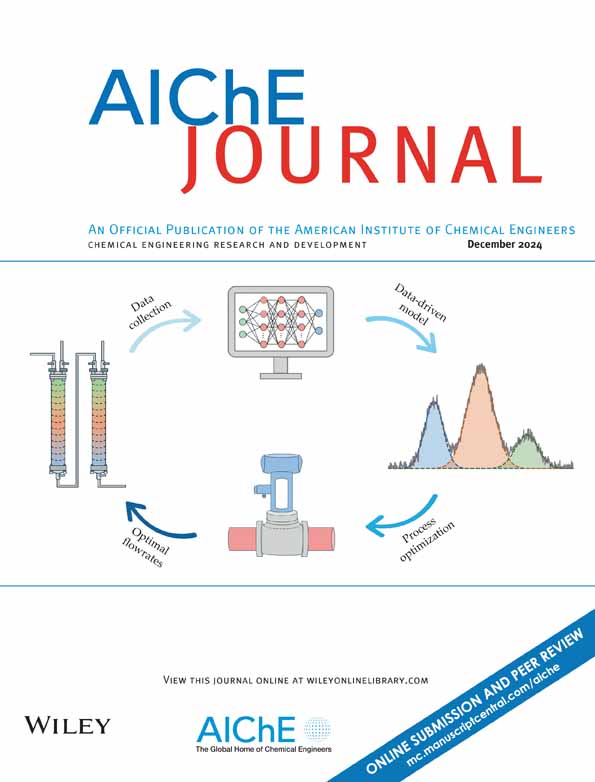利用组合半理性策略提高蔗糖磷酸化酶的区域选择性和活性
IF 3.5
3区 工程技术
Q2 ENGINEERING, CHEMICAL
引用次数: 0
摘要
蔗糖磷酸化酶(SPase)广泛用于多羟基化合物的糖基化,但其区域选择性较低,限制了其应用。本研究通过组合半理性策略提高了罗伊氏limmosilactobacillus reuteri野生型SPase合成2- o -α-d-葡萄糖甘油(2-αGG)的区域选择性(84.7%±0.5%)。通过对催化口袋中非保守残基的序列比对、分子对接分析和关键柔性环上的丙氨酸扫描,鉴定出一个关键残基R137。R137M的区域选择性提高到95.4%±0.4%。采用迭代突变、循环工程和三重编码饱和诱变等方法进一步提高2-OH选择性(97%),其中双突变体R137M/L337T(98.0%±0.5%)效果最好。R137M/L337T全细胞转化2-αGG的产率较高,最终2- oh选择性提高(>99%);此外,副产物葡萄糖的数量大大减少,这意味着水解活性降低。因此,组合半合理诱变方法对提高SPase的区域选择性是有效的。本文章由计算机程序翻译,如有差异,请以英文原文为准。
Enhancing the regioselectivity and activity of sucrose phosphorylase by combinational semi-rational strategies
Sucrose phosphorylase (SPase) is widely used for the glycosylation of polyhydroxy compounds, while low regioselectivity will limit its application. In this study, the regioselectivity of wild-type SPase from Limosilactobacillus reuteri for the synthesis of 2-O-α-d-glucosylglycerol (2-αGG) (84.7% ± 0.5%) was enhanced by combinational semi-rational strategies. A key residue R137 was identified by sequence alignment analysis of non-conserved residues in the catalytic pocket, molecular docking analysis, and alanine scanning at the key flexible loops. The regioselectivity of R137M increased to 95.4% ± 0.4%. Iteration mutation, loop engineering, and triple code saturation mutagenesis were used to further increase the 2-OH selectivity (>97%) and double mutant R137M/L337T (98.0% ± 0.5%) was the best one. Whole-cell transformation with R137M/L337T produced a higher yield of 2-αGG with the increased final 2-OH selectivity (>99%); besides, the amount of byproduct glucose greatly declined, meaning a decreased hydrolysis activity. Hence, the combinational semi-rational mutagenesis methods are effective for improving the regioselectivity of SPase.
求助全文
通过发布文献求助,成功后即可免费获取论文全文。
去求助
来源期刊

AIChE Journal
工程技术-工程:化工
CiteScore
7.10
自引率
10.80%
发文量
411
审稿时长
3.6 months
期刊介绍:
The AIChE Journal is the premier research monthly in chemical engineering and related fields. This peer-reviewed and broad-based journal reports on the most important and latest technological advances in core areas of chemical engineering as well as in other relevant engineering disciplines. To keep abreast with the progressive outlook of the profession, the Journal has been expanding the scope of its editorial contents to include such fast developing areas as biotechnology, electrochemical engineering, and environmental engineering.
The AIChE Journal is indeed the global communications vehicle for the world-renowned researchers to exchange top-notch research findings with one another. Subscribing to the AIChE Journal is like having immediate access to nine topical journals in the field.
Articles are categorized according to the following topical areas:
Biomolecular Engineering, Bioengineering, Biochemicals, Biofuels, and Food
Inorganic Materials: Synthesis and Processing
Particle Technology and Fluidization
Process Systems Engineering
Reaction Engineering, Kinetics and Catalysis
Separations: Materials, Devices and Processes
Soft Materials: Synthesis, Processing and Products
Thermodynamics and Molecular-Scale Phenomena
Transport Phenomena and Fluid Mechanics.
 求助内容:
求助内容: 应助结果提醒方式:
应助结果提醒方式:


